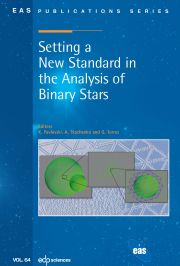Article contents
A Survey of Multiple Planet Systems
Published online by Cambridge University Press: 19 April 2010
Abstract
To date, over 30 multiple exoplanet systems are known, and 28% ofstars with planets show significant evidence of a second companion. I brieflyreview these 30 systems individually, broadly grouping them into fivecategories: 1) systems with 3 or more giant (M sin i> 0.2 MJup)planets, 2) systems with two giant planets in mean motion resonance(MMR), 3) systems with two giant planets not in MMR but whose dynamical evolution is affected by planet-planet interactions, 4) highly hierarchicalsystems, having two giant planets with very large period ratios (>30:1), and 5) systems of “Super-Earths”, containing only planetswith (M sin i< 20 M⊕). It now appears that eccentricities are not markedly higheramong planets in known multiple planet systems, and thatplanets with M sin i< 1 MJup have lower eccentricitiesthan more massive planets. The distribution of semimajor axes forplanets in multi-planet systems does not show the 3-day pile-up or the1 AU “jump” of the apparently-single planet distribution.
Information
- Type
- Research Article
- Information
- Copyright
- © EAS, EDP Sciences, 2010
References
- 3
- Cited by

